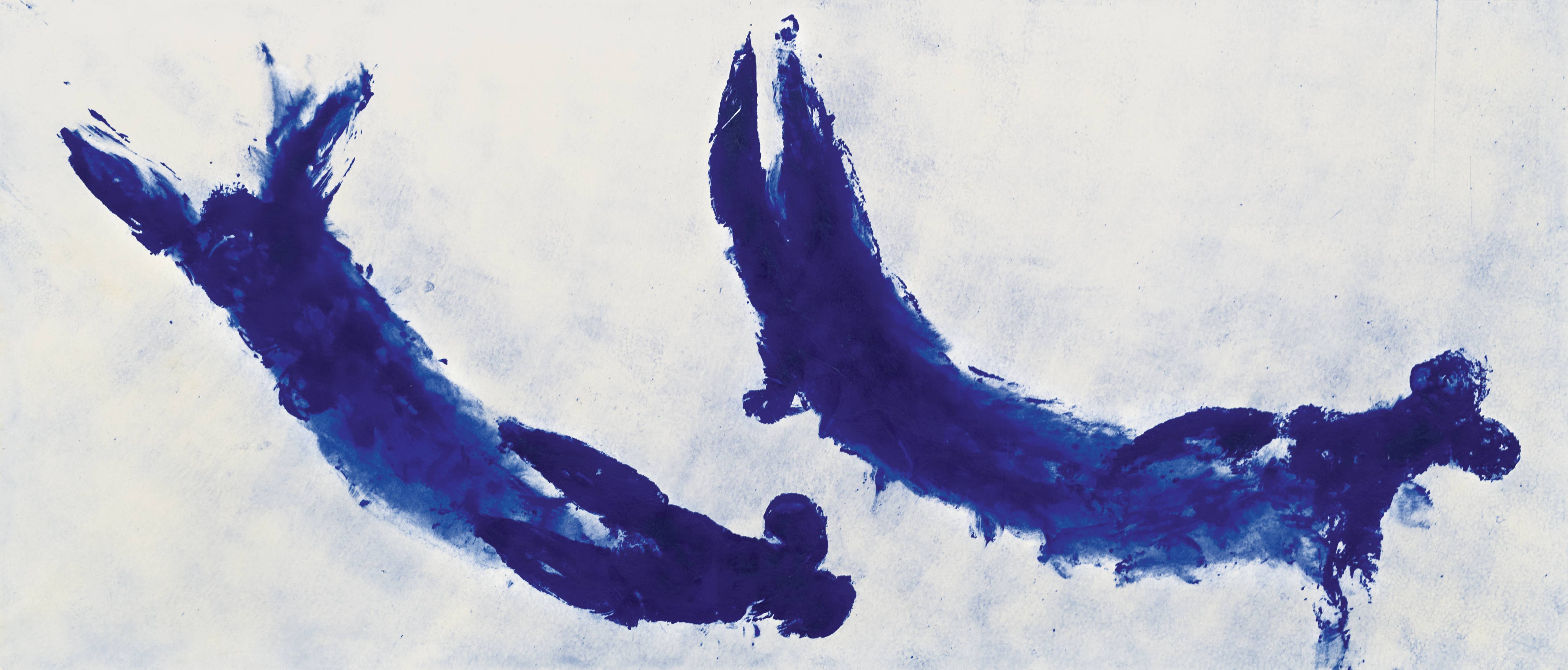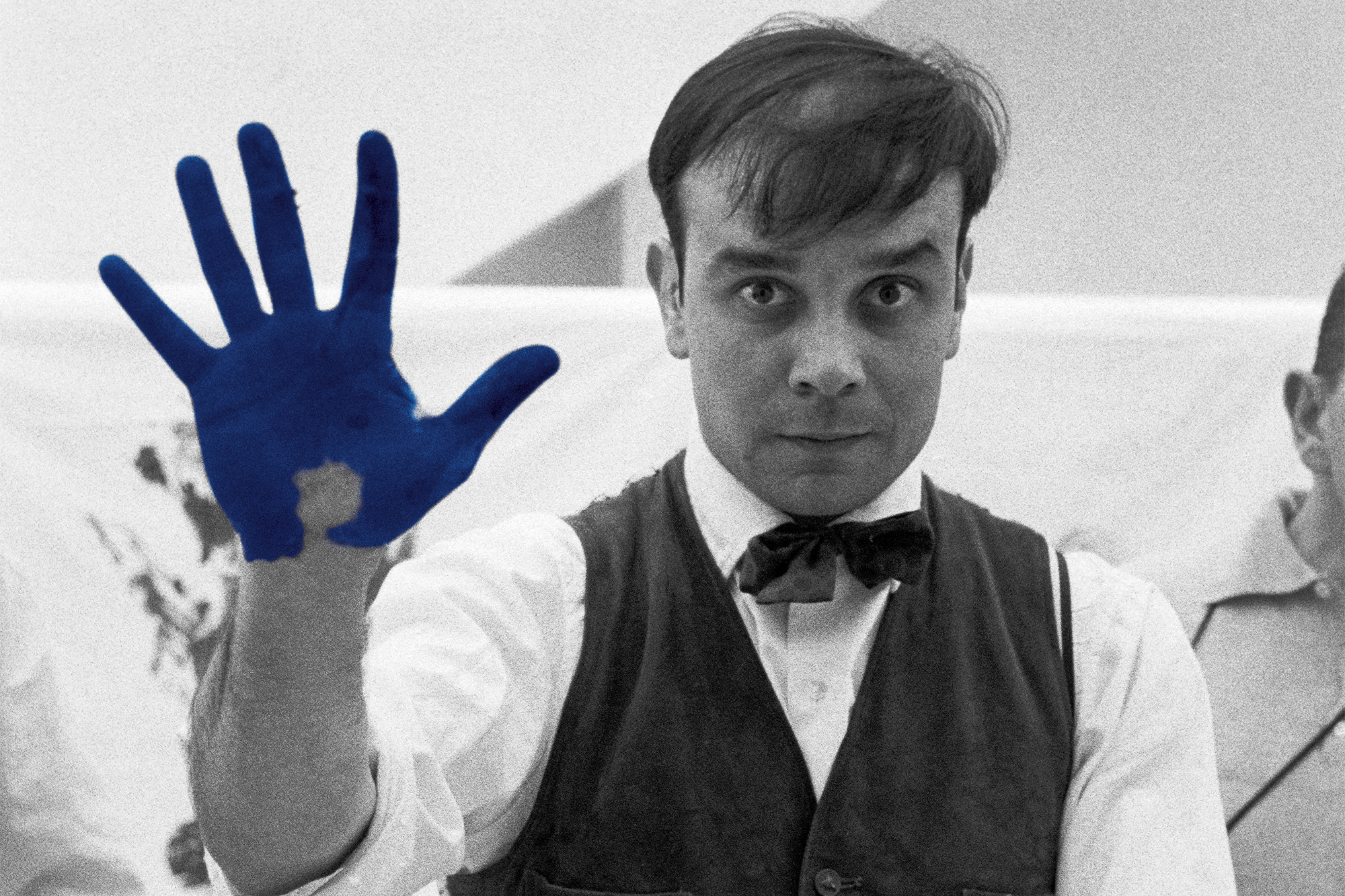



Anthropométrie bleue sans titre
oil on canvas • 155 x 359 cm
On this day in 1928 Yves Klein was born, one of my favorite contemporary artists. It is difficult for me to explain why he resonates with me so much - the fact is that when I saw one of his paintings hung on a gallery wall, I immediately fell in love with his works. I dream that one day I will own one of his pieces. Enjoy today's Anthropométrie :)
Yves Klein is renowned for his almost exclusive use of a strikingly resonant, powdery ultramarine pigment, which he patented under the name “International Klein Blue,” claiming that it represented the physical manifestation of cosmic energy that, otherwise invisible, floats freely in the air. In addition to monochrome paintings, Klein applied this pigment to sponges, which he attached to canvases as relief elements or positioned on wire stands to create biomorphic or anthropomorphic sculptures. First exhibited in Paris in 1959, the sponge sculptures—all essentially alike, yet ultimately all different—formed a forest of discrete objects surrounding the gallery visitors. About these works Klein explained, “Thanks to the sponges—raw living matter—I was going to be able to make portraits of the observers of my monochromes, who . . . after having voyaged in the blue of my pictures, return totally impregnated in sensibility, as are the sponges.”
For his Anthropométries series, Klein famously used nude female models drenched in paint as “brushes.” His system of pressing bodies against the paper support (which was later mounted on canvas) rejected any illusion of a third dimension in the pictorial space. In these works, the subject, object, and medium become confused with one another to produce a trace of the body's presence. Klein's unconventional activities also included releasing thousands of blue balloons into the sky, and exhibiting an empty, white-walled room and then selling portions of the interior air, which he called “zones” of “immaterial pictorial sensibility.” His intentions remain perplexing thirty years after his sudden death. Whether Klein truly believed in the mystical capacity of the artist to capture cosmic particles in paint and to create aesthetic experiences out of thin air and then apportion them at whim is difficult to determine. The argument has also been made that he was essentially a parodist who mocked the metaphysical inclinations of many modern painters, while making a travesty of the art market.
--
Please donate DailyArt and help us grow: http://support.getdailyart.com
 Yves Klein
Yves Klein